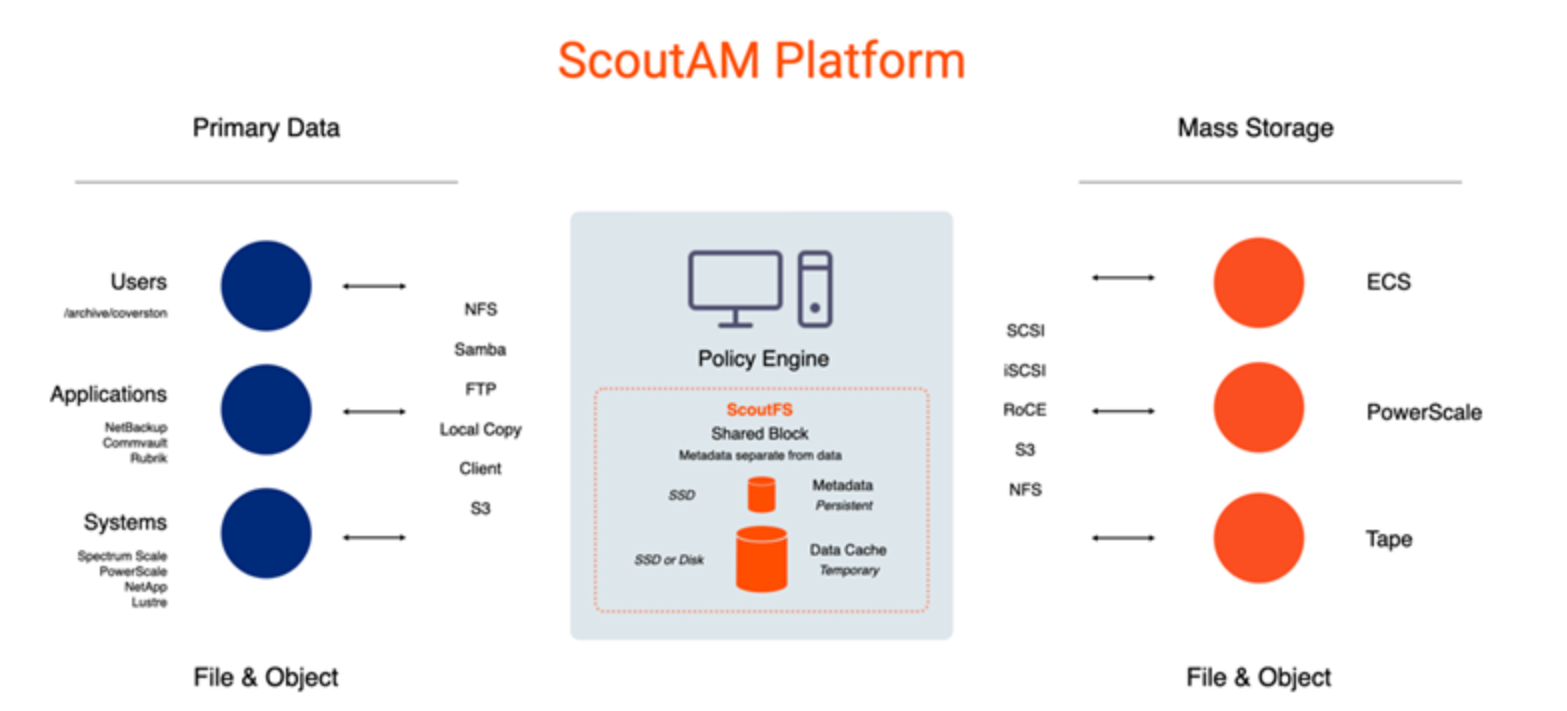Home > Storage > ObjectScale and ECS > Industry Solutions and Verticals > Turnkey Mass Storage using Versity ScoutAM and Dell ECS > Writing Data
Writing Data
-
Data is ingested from primary sources to the ScoutAM Cache Filesystem (ScoutFS) over industry standard POSIX file and S3 object protocols. Primary data sources include end users, analytics platforms, applications, scratch filesystems, production databases, and utilities that generate large volumes of data such as enterprise backup products.
As files and objects are ingested, metadata is separated from data and written to a flash device where it remains online permanently for browsing, searching, and use by applications. Mass storage information such as the number of copies and the location of the copies is stored within the ScoutFS metadata.
Data resides in the cache for a configurable time interval or until the storage pool reaches a predetermined capacity threshold at which time policies are applied to efficiently move data to mass storage systems.

Cache space on shared block devices is managed between high and low thresholds that are specified by the site administrator. ScoutAM automatically manages space to balance new incoming files, archiving activities, and data retrieval. Archived files are optionally released (removed) from the cache only when the high threshold is reached so that files remain accessible on the fastest storage whenever possible. Storage administrators may specify that files with certain attributes should always remain in the cache for fast access.
